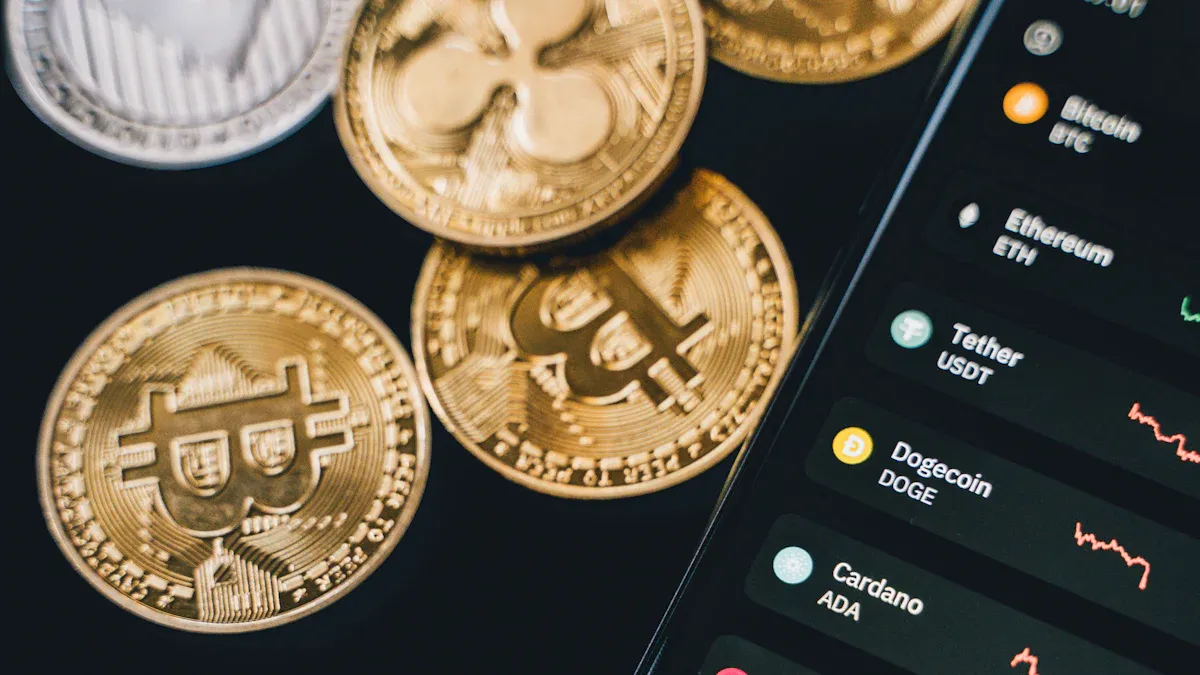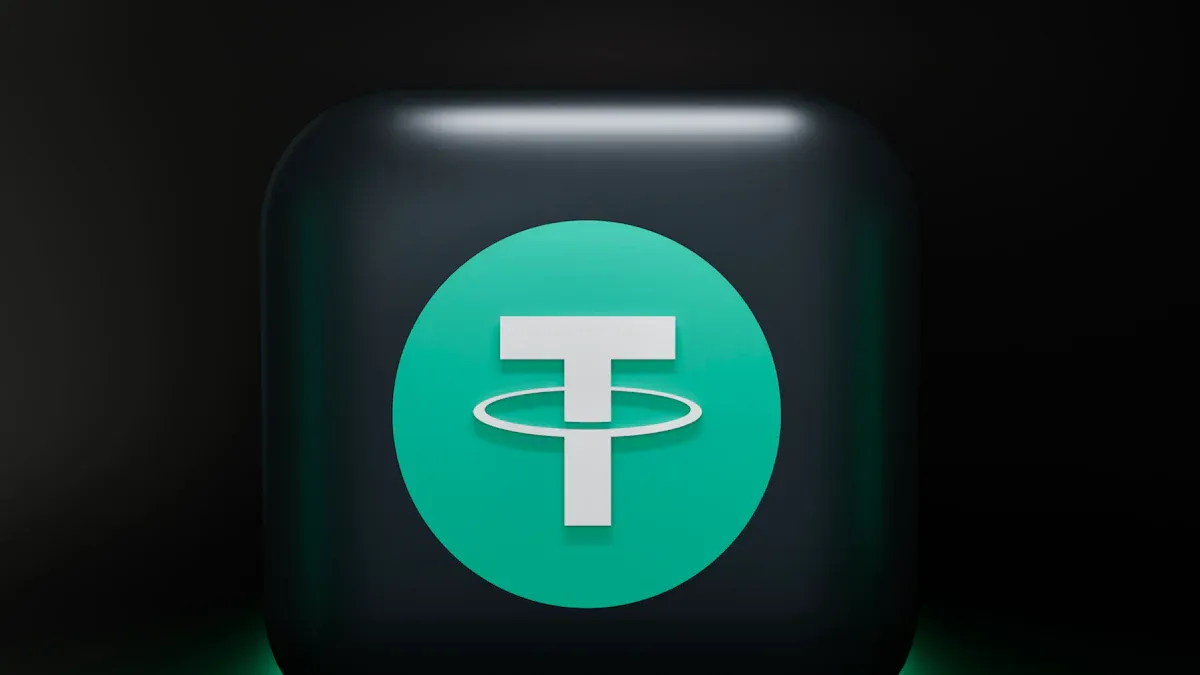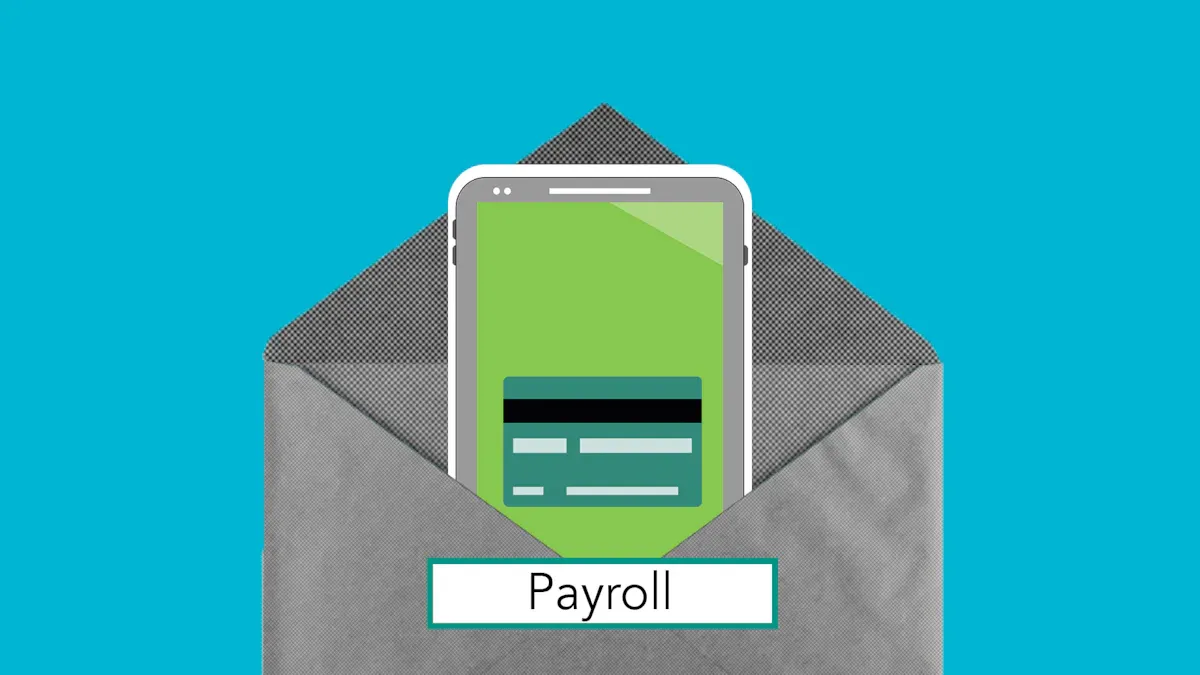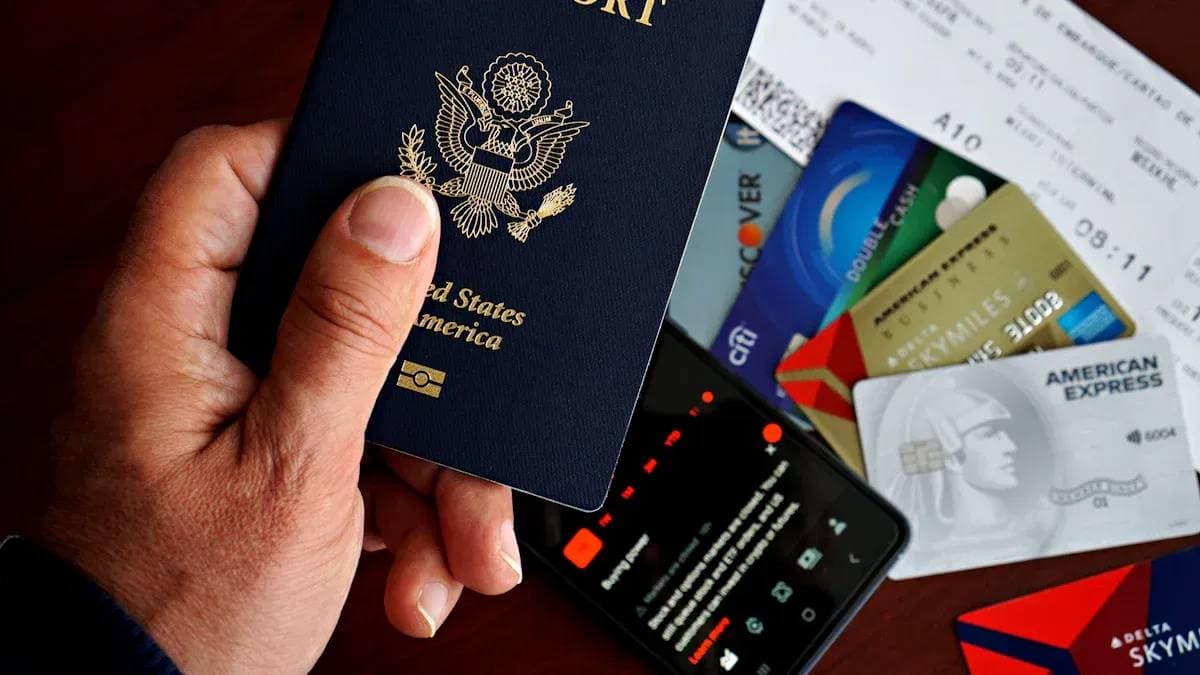- EasyCard
- Trade
- Help
- Announcement
- Academy
- SWIFT Code
- Iban Number
- Referral
- Customer Service
- Blog
- Creator
New Era of Overseas Salary Distribution: Stablecoin USDT Payment Guide 2025

Image Source: pexels
Are you troubled by salary distribution for your global team? Using stablecoins like USDT to pay overseas salaries is your strategic choice to reduce costs and improve efficiency in global competition. Traditional wire transfers can generate up to $75 in fees per transaction and take 2-5 days, while USDT transfers cost less than $1 and arrive in minutes.
You may be facing the following challenges:
- Administrative complexity of managing multi-country bank accounts
- Inconsistent employee compensation and compliance risks due to exchange rate fluctuations
- Difficulty paying employees in regions with inconvenient banking services
These difficulties hinder enterprises from achieving efficient, low-cost overseas salary distribution goals.
Core Points
- Using USDT to pay overseas salaries saves costs, improves efficiency, and covers the globe.
- USDT payments are faster and cheaper than traditional bank transfers because they occur directly on the blockchain.
- Both enterprises and employees need to prepare digital wallets and learn how to use USDT securely.
- After receiving USDT, employees can convert it to local currency via P2P markets.
- When using USDT to pay salaries, enterprises need to understand local laws and tax regulations.
Stablecoin Salary Payments: Core Concept Analysis

Image Source: unsplash
To understand the advantages of USDT salary payments, you first need to master two basic concepts. This will help you clearly recognize its fundamental differences from traditional payment methods.
Stablecoin Basics: USDT and USDC
A stablecoin is a special digital currency. Its value maintains a 1:1 peg with a stable asset (usually the US dollar). This means that 1 USDT or USDC is theoretically always worth 1 dollar. This design eliminates price volatility risks of cryptocurrencies like Bitcoin, making it an ideal payment and settlement tool.
The two most mainstream USD stablecoins on the market are USDT (Tether) and USDC (USD Coin). They are not limited to a single system but operate on multiple efficient blockchain networks, providing you with flexible choices.
- Ethereum
- Tron
- Solana
- Binance Smart Chain (BSC)
This multi-chain deployment ensures that no matter where your employees are, there is always a low-cost, high-efficiency transfer path available.
How It Works: Disrupting Traditional Cross-Border Remittances
Traditional overseas remittances rely on the SWIFT system. SWIFT itself does not transfer funds; it is just a secure messaging network between banks. Your payment instructions need to be relayed through multiple intermediary banks (correspondent banks) before funds finally reach the recipient’s account. This process is not only time-consuming (usually taking 2-5 business days) but also incurs fees from each intermediary bank.
Stablecoin payments are completely different. They perform peer-to-peer (P2P) direct transfers on the blockchain.
Simply put, traditional remittances are like a letter that needs to be relayed through multiple post offices; while stablecoin transfers are like an email sent directly to the recipient’s inbox.
When you pay USDT salaries, funds transfer directly from your digital wallet to the employee’s digital wallet, without any bank as an intermediary. The entire transaction is recorded on a public and transparent blockchain, confirmed in minutes. This not only eliminates intermediate costs but also provides unprecedented speed and transparency.
USDT Payment Advantages: Achieving Low-Cost Overseas Salary Distribution
When comparing USDT payments to traditional methods, its advantages become obvious. It is not a minor improvement to existing processes but a disruptive upgrade. This is mainly reflected in three aspects: cost, efficiency, and global coverage, together achieving your low-cost overseas salary distribution goal.
Significant Cost Advantages
The core bottleneck of traditional cross-border payments is high intermediate costs. Every time funds pass through an intermediary bank, a layer of fees is stripped away. This makes your payment costs unpredictable and high.
According to World Bank data, the global average cost rate for cross-border remittances is about 6.35%. This means over $600 “evaporates” en route for every $10,000 salary paid.
USDT payments completely bypass this expensive system. By performing peer-to-peer transfers on high-performance blockchains (like TRON or Solana), you can control per-transaction fees under $1.
The table below clearly shows this difference:
| Payment Method | Transaction Fee | Estimated Arrival After Sending $1,000 |
|---|---|---|
| Traditional SWIFT Wire | $25 - $75 | $925 - $975 |
| USDT (TRON Network) | Usually under $1 | About $999 |
This huge cost saving turns low-cost overseas salary distribution from an ideal into reality. You can use the saved funds for core business growth or employee benefits, forming a virtuous cycle.
Unmatched Payment Efficiency
Time is money, especially in global operations. Traditional bank systems are constrained by business days, holidays, and time zones, often requiring long waits for international salary payments.
- Traditional bank system: International wire clearing usually takes 2-5 business days.
- USDT payment: Transactions are processed near real-time on the blockchain, employees receive funds in minutes.
Blockchain technology provides you with a 24/7, year-round payment network. You no longer need to worry about bank hours. Whether on weekends or public holidays, you can initiate payments anytime, and employees receive instantly.
This instant arrival eliminates uncertainty, significantly boosting employee satisfaction. You no longer need to handle “Where is my salary?” issues. Predictable, efficient payment processes simplify your financial management, a key part of achieving low-cost overseas salary distribution.
True Global Financial Inclusion
Does your enterprise want to hire top talent from regions with inconvenient banking services? In many developing markets, opening and using bank accounts can be a huge challenge for locals.
Data shows that in some Southeast Asian countries, most adults do not even have bank accounts:
| Country/Region | Proportion of Adults Without Bank Accounts |
|---|---|
| Vietnam | About 69% |
| Philippines | About 66% |
This was once a major barrier to global enterprise recruitment. However, the popularization of smartphones and internet provides a perfect solution for USDT payments. Employees only need a phone and a digital wallet app to receive salaries from anywhere globally.
For example, in the Philippines and Vietnam, many freelancers and remote workers are already using stablecoins like USDT to receive payments from US or European clients. They receive via mobile wallets like Trust Wallet, completely bypassing traditional bank restrictions and high fees. This not only opens global job opportunities for them but also allows enterprises like yours to access a broader talent pool.
By embracing USDT payments, you can distribute salaries precisely and quickly to any internet-connected corner. This not only reflects corporate social responsibility but is also a powerful competitive advantage, truly achieving low-cost overseas salary distribution with no boundaries.
USDT Salary Distribution: Step-by-Step Practical Guide

Image Source: pexels
Theoretical knowledge lays a solid foundation. Now, let’s enter the core phase: how to step-by-step securely and efficiently distribute USDT salaries to global employees. This guide provides a clear roadmap covering the entire process from preparation to employee receipt.
Preparation: Enterprise and Employee Checklists
Thorough preparation is key to ensuring smooth salary distribution. Both you and your employees need to complete some simple initial setups.
1. Enterprise Checklist (Your Checklist):
- Acquire USDT funds: You need to purchase and hold sufficient USDT for salaries via compliant channels.
- Choose payment tool: You can use self-custodial wallets for manual transfers or professional salary payment platforms like Biyapay to simplify batch distribution.
- Establish internal policies: Clearly define exchange rate calculation date, payment date, and employee training guidelines.
2. Employee Checklist (Employee’s Checklist):
Employees need a digital wallet to receive USDT. Guiding them to create wallets is your primary task.
Core Recommendation: Recommend TRON (TRC-20) Network To maximize cost benefits, we strongly suggest employees use wallets supporting the TRON network. This network’s transfer handling fees are usually under $1, far lower than Ethereum, making it ideal for salary distribution.
Employees can choose the following wallet types:
- Software Wallets (Mobile/Desktop): Beginner-friendly, convenient and fast.
- TronLink: Official TRON wallet, seamlessly integrated with TRON ecosystem.
- Trust Wallet: Popular mobile wallet, user-friendly interface, supports multiple assets.
- Exodus Wallet: Beautiful design, supports multiple cryptocurrencies, built-in exchange.
- Hardware Wallets (Cold Wallets): Highest security, suitable for security-conscious employees.
- Ledger Nano S/X: Industry-recognized security standard, protects assets via offline private key storage.
- SafePal S1: Binance-invested, secure via air-gapped signing, high cost-performance.
- Tangem Wallet: Card design, interacts with phone via NFC, simple and easy.
Security First: Private Key Equals Assets You must repeatedly emphasize to employees: Private keys or seed phrases are the sole credentials for their assets. Anyone obtaining the private key gains full wallet control. Guide employees to handwrite them on paper, store in multiple secure physical locations, never screenshot or store online.
Four-Step Payment Process
After preparation, the actual payment process is very straightforward. Choose the method best suited to your team size.
Step 1: Collect Employee Wallet Addresses
Collect employees’ created TRC-20 USDT receiving addresses. This is a string starting with “T”, e.g., TPAj9Wni36i4N14aXaxVpXp3Z4zT2BXXXX. Use shared spreadsheets for unified management and repeatedly verify to prevent errors.
Step 2: Prepare Payment Funds
Transfer your prepared USDT to the wallet or salary platform (like Biyapay) account used for payments. Ensure account balance covers all employee salaries plus network fees.
Step 3: Execute Batch Payments
This is the core of efficient distribution.
| Payment Method | Applicable Scenarios | Operational Complexity | Cost & Efficiency |
|---|---|---|---|
| Manual Transfer | Paying 1-3 employees | Simple but repetitive | Separate network fee per transfer, time-consuming |
| Batch Payment Tool | Paying 3+ employees | Efficient, one-time operation | Significantly saves time, some tools optimize fees |
For enterprises with global teams, manual transfers are time-consuming and error-prone. Using tools supporting batch payments is more professional. For example, platforms like Biyapay or Cwallet allow uploading a .csv file with addresses and amounts to initiate transfers to hundreds of addresses at once. These platforms usually offer:
- Address error detection: System auto-identifies malformed addresses, preventing fund loss.
- Process simplification: Encapsulates complex blockchain operations into a few clicks, no deep technical knowledge needed.
- Unified management: Centralizes all payment records in one backend for reconciliation and auditing.
Step 4: Confirmation and Recording
After initiating payments, transactions complete in minutes. Provide employees the transaction hash; they can enter it on TRON blockchain explorers (like TRONSCAN) to verify arrival. Also, properly record each payment in your financial system.
Employee Cash-Out Guide: Convert to Local Currency
After successfully receiving USDT, the final step is converting it to local fiat (e.g., Philippine Peso, Argentine Peso). This process is called “cashing out” or “Off-Ramp”.
Guide employees to use two mainstream channels:
- P2P (Peer-to-Peer) Markets: Trade directly with other users in an e-commerce-like market.
- OTC (Over-the-Counter) Service Providers: Brokers offering dedicated services for large transactions.
Convert via P2P Market (e.g., OKX/Binance P2P):
This is the most common and flexible method. Employees follow these steps:
- Access P2P Platform: Find “P2P Trading” or “C2C Trading” in the exchange App or website.
- Select Sell: Switch to “Sell” page, choose
USDT, filter desired local currency and payment method (e.g., bank transfer). - Choose Buyer: Browse ads, select reputable buyer with good price to place order.
- Wait for Payment: Wait for buyer to pay via your chosen method.
- Confirm Receipt: Critical Step! Log into your bank account or e-wallet, carefully verify correct amount received.
- Release USDT: After confirming receipt, return to P2P platform, click “Confirm Receipt and Release” to send USDT to buyer.
Through this process, employees can autonomously and quickly convert digital USD salaries to local cash. This not only gives them great flexibility but ultimately helps your enterprise achieve true globalization and low-cost overseas salary distribution.
Risk Management and Compliance Key Points
While embracing USDT salary payment advantages, you must face and manage potential risks. Clear risk awareness and compliance strategies are the cornerstone of protecting enterprise and employee assets and ensuring long-term stable operations.
Common Operational and Platform Risk Avoidance
Operational security is the first line of defense you can directly control. Provide sufficient training to employees to avoid common security pitfalls.
Core Security Principle: Private Key Equals Assets Emphasize to employees that private keys or seed phrases are the sole sovereignty credentials for wallets. Never share via screenshots, email, or chat tools. Best practice is handwriting on paper, storing in fireproof and waterproof safes.
Also, you and employees should beware of common scams:
- Fake wallets and giveaway scams**: Scammers promote fake wallet apps via ads or social media, or use “giveaways” as bait, requiring small USDT transfers to “verify address” to steal funds.
- P2P trading fraud: In P2P markets, beware buyers sending forged payment screenshots. Personally log into bank to confirm funds before releasing USDT.
- Impersonation scams: Scammers impersonate your company, platform support, or government, demanding USDT transfers for various reasons. Verify via official channels.
Global Regulatory Environment and Tax Responsibilities
Stablecoin regulatory frameworks are rapidly evolving globally. Understand major economies’ basic stances to ensure compliant operations.
| Economic Region | Regulatory Stance/Requirements |
|---|---|
| European Union (EU) | MiCA framework allows crypto salaries, but member states have tax autonomy. Salaries must be reported in EUR for tax calculation. |
| United States | Treats cryptocurrency as property. Employers must determine USD fair value at payment, withhold and pay taxes in fiat. |
| Singapore | Supports digital asset compensation, refining frameworks with positive regulatory posture. |
Regardless of your or employees’ locations, tax compliance is a serious responsibility.
Tax Reporting Key Points
- Income Reporting: Employees’ received USDT salaries must be declared as personal income.
- Record Keeping: Retain detailed records of each salary payment, including date, amount, and USD value at the time.
- Seek Professional Advice: Due to vast jurisdictional tax differences, strongly consult local tax experts for full compliance.
By establishing robust risk management and compliance processes, you can confidently leverage USDT payment advantages while minimizing potential risks.
How to Choose a Salary Payment Platform
After deciding to adopt USDT salary payments, choosing the right payment platform is key to ensuring efficient and secure processes. This is not just a technical tool choice but a strategic decision concerning enterprise financial security and operational efficiency.
Platform Types: Exchanges and Professional Service Providers
Your choices mainly fall into two: general cryptocurrency exchanges and professional salary payment service providers.
- Cryptocurrency Exchanges: Primary venues for buying and trading crypto. You can manually transfer from exchanges to employee wallets. Suitable for initial trials with very few payees (1-3), but lacks batch processing, compliance reporting, etc.
- Professional Salary Service Providers: Designed specifically for global salary scenarios, preferred for enterprise applications. Providers like Biyapay encapsulate complex blockchain operations into simple interfaces, offering batch payments, compliance support, and detailed financial reports.
The market has multiple professional global salary providers offering crypto payment options, usually integrating compliance frameworks to simplify processes:
| Company Name | Crypto Payment | Global Coverage | Compliance Highlights |
|---|---|---|---|
| Deel | Supported | 100+ countries | Partners with Coinbase, complies with local tax reporting |
| Papaya Global | Supported | 100+ countries | Complies with national/regional standard workflows |
| RiseWorks | Supported | Global contractors | Automated onboarding, verifies worker identity via KYC/AML |
Choosing professional providers upgrades salary distribution from a tedious manual task to an automated financial management process.
Key Evaluation Criteria: Security, Fees, and Usability
When evaluating platforms, focus on three core criteria:
1. Security: Primary evaluation factor. Fund security is non-negotiable. Trustworthy platforms usually hold industry-recognized security certifications, proving commitment to data protection and risk management.
Look for these security certifications:
- SOC 2: Key standard assessing service organization security, availability, and confidentiality.
- ISO 27001: International gold standard in information security management.
- PCI DSS: Payment Card Industry Data Security Standard, applies to platforms handling payment info.
For example, platforms like RiseWorks have obtained SOC 2 certification, providing extra security assurance.
2. Fee Structure: Platform fees directly impact operational costs. Understand full charging models, usually including:
- Subscription Fee: Fixed monthly/annual fee per employee or contractor. For example, some platforms charge about $49 per contractor monthly.
- Transaction Fee: Percentage of each payment amount. For example, some charge 1% per transaction.
- Conversion Fee: Fees when converting between fiat and USDT.
Request clear fee lists to avoid hidden costs.
3. Usability: Excellent platforms should be easy for your finance team to adopt. Evaluate intuitive interfaces, clear payment dashboards, and efficient batch payment functions (e.g., paying hundreds via .csv upload). Comprehensive customer support is crucial for timely help with issues.
USDT salary payments’ three core advantages in cost, speed, and global coverage are making it an essential tool for future global enterprises. EasyStaff data shows 6.8x year-over-year growth in enterprise stablecoin payroll adoption, proving this trend.
Your First Step: Start by paying small amounts to one or two overseas contractors, iterate quickly, and accumulate valuable experience.
Looking ahead, with improving compliance frameworks like EU MiCA and more user-friendly products, stablecoin payments will accelerate mainstream adoption, giving you a first-mover advantage in global talent competition.
FAQ
Is using USDT to pay salaries legal?
Salary payment compliance depends on your employees’ locations’ laws. Consult local legal and tax experts. Many regions allow it but require tax reporting at local fiat fair value.
What if USDT de-pegs from USD?
This is a valid risk consideration. Though USDT aims to maintain peg, short-term fluctuations may occur. You can immediately convert received USDT to fiat or use more strictly regulated USDC as an alternative to diversify risk.
What if my employees are unwilling to accept USDT salaries?
Treat this as an optional scheme, not mandatory. Clearly communicate USDT payment advantages in speed and low cost.
Best practice is offering both traditional bank transfers and USDT payments, letting employees decide based on their situations.
Is this process too complex for employees?
Initial setup requires guidance. Provide clear guides to help:
- Recommend user-friendly wallets like Trust Wallet.
- Create simple video tutorials.
- Emphasize private key storage importance.
Thorough preparation significantly reduces operational difficulty.
*This article is provided for general information purposes and does not constitute legal, tax or other professional advice from BiyaPay or its subsidiaries and its affiliates, and it is not intended as a substitute for obtaining advice from a financial advisor or any other professional.
We make no representations, warranties or warranties, express or implied, as to the accuracy, completeness or timeliness of the contents of this publication.




Contact Us
Company and Team
BiyaPay Products
Customer Services
BIYA GLOBAL LLC is a licensed entity registered with the U.S. Securities and Exchange Commission (SEC No.: 802-127417); a certified member of the Financial Industry Regulatory Authority (FINRA) (Central Registration Depository CRD No.: 325027); regulated by the Financial Industry Regulatory Authority (FINRA) and the U.S. Securities and Exchange Commission (SEC).
BIYA GLOBAL LLC is registered with the Financial Crimes Enforcement Network (FinCEN), an agency under the U.S. Department of the Treasury, as a Money Services Business (MSB), with registration number 31000218637349, and regulated by the Financial Crimes Enforcement Network (FinCEN).
BIYA GLOBAL LIMITED is a registered Financial Service Provider (FSP) in New Zealand, with registration number FSP1007221, and is also a registered member of the Financial Services Complaints Limited (FSCL), an independent dispute resolution scheme in New Zealand.




















